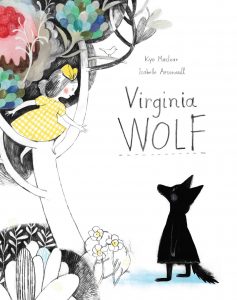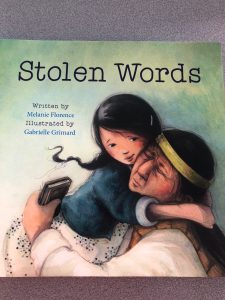Children’s book banning – especially of LGBT text – has a unique and landmark history in BC. It involved a school board with a fundamental Christian chair, a gay teacher couple, and the Supreme Court of Canada. The lasting legacy is subtle now but still deeply profound. Though historical record now, I feel this history is vital for all BC Teachers to be aware of (wow, if I must say so myself eh 🙂
Here is a summary by the BCTF and below are more links.
Surrey book banning case
“In 1997… three children’s books (Belinda’s Bouquet, Asha’s Mums, and One Dad, Two Dads, Brown Dads, Blue Dads) were submitted to the Surrey School Board for approval for use in Kindergarten and Grade 1 as resources for the personal planning curriculum. The books feature children who have two moms or two dads. The board refused to allow the books to be used …because parents complained that their religious beliefs would be offended.”
-Murray Corren, honourary lifetime member, in Teacher May/June 2002.
In the ensuing six-year battle, James Chamberlain, the teacher originally requesting board approval, along with Murray, his partner Peter Corren, Surrey parent Dianne Willcott, and lawyer Joe Arvey asserted that “the ban imposed by the board breached the School Act, which requires that public schools be conducted on “strictly secular” principles, precluding the board’s decision’s being “significantly influenced by religious considerations.” (Corren, 2002)
“Teacher-librarians and the BCTF proved to be outstanding allies in this fight against censorship over the years. BCTF locals and teachers gave generously to the fundraising campaign for us as the petitioners in this precedent setting case. Courageous Kindergarten and Grade 1 teachers in different school districts read these books in their classrooms and were instrumental in filing affidavits in the courts that resulted in an eventual win by a decisive seven-to-two margin at the Supreme Court of Canada.”
-James Chamberlain
Globe and Mail article 2002
https://www.theglobeandmail.com/news/national/school-board-bans-books-showing-gay-families/article22733504
xtra.ca article 2003
https://www.dailyxtra.com/surrey-reconsiders-book-ban-43901
Excerpt:
Like Justice Saunders before her, Chief Justice Beverley McLachlin found the school board violated the secular nature of BC’s School Act when it based its decision on religious concerns.
The board used the wrong criteria to evaluate those books, McLachlin ruled. It should have judged the books using the same curriculum-based criteria it applies to all other potential books.
Trustees are supposed to evaluate proposed books based on the contribution they could make to students’ learning, the quality of their storytelling, their nice illustrations, their use of good grammar and other such considerations-not the fact that they mention same-sex families.
“The board was not permitted to reject the books simply because certain parents found the relationships depicted in them controversial or objectionable,” McLachlin ruled.
Nor was she swayed by the trustees’ argument that five-year-olds are too young to hear about same-sex families. “Tolerance is always age appropriate,” McLachlin wrote, before she, too, sent the decision back to the school board for reconsideration.
———————————
On June 13 2003 the Surrey School board voted again, in spite of Supreme Court ruling to ban the books a second time
https://www.theglobeandmail.com/news/national/school-board-bans-books-showing-gay-families/article22733504/
Excerpt:
In arguing against the books this time, the dissenting board members said the grammar, continuity and various non-sexual messages the books portray do not fit the board’s criteria for appropriate learning aids.
Ms Polak said her board has accepted the Supreme Court’s ruling and is only concerned with how the topic of same-sex parents will be addressed.
“Frankly these books don’t do a very good job of it,” she said.
“You select the best of the best, especially in regards to a topic that is full of a lot of controversy and that people are really concerned about and you have to make sure you do that in the right way.”
A spokeswoman for the conservative lobby group Focus on the Family was satisfied with the decision and said it’s time to move on.
“Certainly there are more pressing needs in the school district then focusing on one or two learning resources,” said Anne Marie White.
But James Chamberlain, a gay teacher who first brought the books forward seven years ago and spearheaded the legal fight to overturn the initial ban, said he wasn’t buying the board’s new reasoning.
No other book in Surrey would pass the board’s criteria, he said. The books depict children living with same-sex parents but contain no mention of sex.
While not surprised by the vote, Mr. Chamberlain said the board is “grasping at straws” and used criteria that had not been brought up in six years of litigation.
He particularly questioned the board’s reason for banning Belinda’s Bouquet on the basis that the dieting issues the book discusses are not suitable for young children.
“That’s like saying Jack and the Beanstalk will encourage children to engage in theft, or Goldilocks and the Three Bears to engage in breaking and entering,” said Mr. Chamberlain. “It’s just a ludicrous argument.”
Mr. Chamberlain said he may go back to court to have the new ban overturned.
————————-
https://www.cbc.ca/news/canada/school-board-rejects-books-with-gay-parents-for-bad-grammar-1.392499
The board came to the same conclusion Thursday night, but for different reasons this time.
“This story has problems with punctuation and grammar throughout. The spelling of ‘favourite’ is inconsistent, switching from the Canadian to the American,” said board chair Mary Polak about Asha’s Mums.
The board also criticized the book’s depiction of men.
Belinda’s Bouquet was rejected because it raised the subject of dieting.
“To discuss the issue of dieting as it relates to body image is risky at this age, and I think clumsily handled in this story,” said Polak.
The board rejected One Dad, Two Dads, Brown Dad, Blue Dads because it said it made fun of skin colours and dealt too much with sexual orientation for its intended audience of kindergarteners.
James Chamberlain, a kindergarten teacher who tried to bring Asha’s Mums into his class six years ago, says he wasn’t surprised by the board’s ruling, but says the reasons are weak.
“The board is grasping at straws, dreaming up criteria six years after the fact,” he said.
————————
So as far as I know that is how it ended up. The books were ultimately banned for other reasons, but from 2002 no school Board could ban a book based on LGBT content or moral objections from parents that are not consistent with secular schools. Chair Mary Polacco became a BC Liberal MLA (Langley) and has been elected three times since 2005., James Chamberlain went on to form Gay and Lesbian Educators (GALE) BC to support queer educators and students.
This Supreme Court ruling might be used to challenge the new Ontario Ford’s government rescinding their new sex Ed curriculum based mainly on these historic arguments. (Offending the conservative religious objections of parent groups).
This is one of many academic papers that came out of the Surrey Book Ban case:
BANNING BOOKS, BURNING BRIDGES: RECOGNIZING STUDENT FREEDOM OF EXPRESSION RIGHTS IN CANADIAN CLASSROOMS
https://ojs.library.dal.ca/djls/article/viewFile/4219/3860
Abstract:
In Canada, books and magazines are regularly intercepted at the border and are consistently removed from libraries, schools and bookstores. The banning of books is a controversial topic that involves issues of cen- sorship and freedom of expression rights. The Supreme Court of Cana- da recently examined the issue in Chamberlain v. Surrey School District No. 36, where it was found that the School Board acted unreasonably in banning several books depicting same sex couples. The Court, however, did not consider the freedom of expression rights of students in reaching their decision. Despite this recent opportunity to comment on a studentʼ’s right to information, Canadian jurisprudence remains silent on the is- sue of student freedom of expression rights in the banning of books from schools. Using Chamberlain as a backdrop, this paper will argue that a liberal interpretation of studentʼ’s freedom of expression rights by the courts would provide much needed guidance for educators in making curriculum selections. The recognition of such rights would place the interests of the students first in pedagogical decision-making, enhance democratic functions within schools, and encourage a rights discourse to shape the classroom environment.


